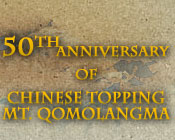
"The eclipse was almost complete, the sun showing as a disc surrounded by a narrow silver rim." [Photo by Atta Kenare/EPA]
On 22 October, 1911 the botanist F Kingdon Ward is in eastern Tibet, travelling up the Yangtze river. "As I rode along I gradually became conscious of a peculiar appearance in the sky to the north, which had assumed a deep violet blue tint," he writes in his adventure memoir, The Land of the Blue Poppy.
"At this time I wished to take some photographs, but the waning light made me hesitate; yet when I glanced at the sun I was surprised to see it apparently shining as brightly as ever, a thing I could not understand, for I could have sworn that it was obscured by clouds. There were no clouds, however, except far away in the south, where it looked like late evening, so subdued was the light. It grew darker and darker, and at last it dawned on me that this was an eclipse of the sun, a phenomenon I had never before witnessed. The eclipse was almost complete, the sun showing as a red disc surrounded by a narrow silver rim. Seen through a film of cloud the dark shadow of the obstruction was visible passing over from above downwards, and seen through snow glasses it appeared quite black. The eclipse began at 9am and lasted for two hours or so."
His Tibetan companions had taken no notice of the growing dimness "but when they saw me staring up at the sun through blue glasses, they began talking a good deal amongst themselves, though they were far from exhibiting signs of consternation and scarcely evinced surprise."







